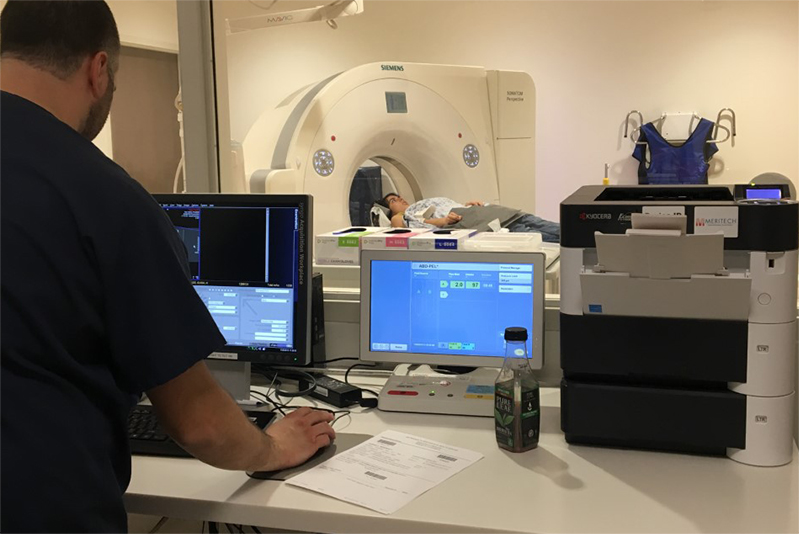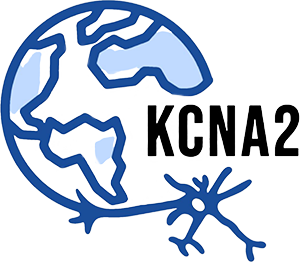Assessment,
Therapy and Education
Clinical assessments such as EEG’s and MRI’s will inform you about the type of seizure activity one is experiencing. Genetic testing will clarify the type of variation found in the KCNA2 gene. Treatment most likely will involve a trial of medications to control seizures. Various types of therapies may be helpful such as (but not limited to) physical, occupational, speech, music, and movement to help your child develop life skills and self-help skills. Therapy can also promote motor development, coordination, strength, and balance.
Clinical Assessments
When seizures are presented in infancy, a number of potential causes are considered and need excluded before genetic testing is pursued. A variety of clinical factors will be considered and tests will be performed to evaluate for infection, electrolyte disturbance, metabolic disorders, and structural problems in the brain. Following observation and evaluation of the clinical presentation, a physician may follow up with an EEG, MRI and genetic testing.
MRI
Magnetic Resonance Imaging (MRI) is a radiological technique that produces detailed images of cross-sections or slices of the brain by using a magnetic field. The images can provide information concerning any malformation of the brain structures or other types of lesions commonly seen in epilepsy. The malformations of the potassium channel caused by the KCNA2 mutation, are too small to be detected on an MRI.
GENETIC TESTING
The diagnosis of KCNA2 is ultimately made by molecular genetic testing. This can be done by examining only the potassium channel gene or by a genetic test that looks for variation in a number of genes associated with epilepsy in infancy, or even whole genome or whole exome sequencing, which screen all, or nearly all genes.
EEG
One of the first steps in the evaluation of seizures is to characterize the patterns of brain activity associated with the seizures. This is done by performing an electroencephalogram or EEG. This is a painless and non-invasive means of recording the patterns of electrical activity of the brain. Electrodes placed on the scalp pick up and record the electrical waves during periods of activity, sleep, and during seizures. KCNA2 is often associated with a burst-suppression pattern on EEG. This is sometimes referred to as a spike and slow wave pattern. EEG patterns are typically not normal.
Reading Your Genetic Report
After participating in genetic testing, a medical professional will meet with you to explain the results. The lab report will contain information about whether or not a specific mutation has been identified. If a specific variation is identified, you may receive a written report from the lab that includes additional information about that variation. If you receive a diagnosis of a KCNA2 variation, the report may contain the following.
- Protein Change– These letters describe the results of changes observed in the protein, a large string of amino acids. Let us use the example p.R297Q. The “p.” is an abbreviation for protein. In this particular variant, the variation results in the production of the amino acid Glutamine (abbreviated Q) in place of Arginine (abbreviated R) at the location 297. We expected to see amino acid R, but instead, we see a Q.
- Nucleotide Change– This is a code indicating what is observed when taking a closer look at the string of amino acids. For example, if the result says, c.890G>A, this means we expected to see a G on amino acid at this marker, but instead, we see an A. The “>” sign means it is a substitution. If there is a “_” sign it means it is a deletion.
- Gene symbol: KCNA2 is the name of the gene.
- Gene Inheritance: Genes are typically autosomal dominant (the variation is found on one copy of the 22 pair of chromosomes), autosomal recessive (the variation is found on both copies of the 22 pair of chromosomes), or X-linked (the variation is found on the X chromosome). If the individual is a girl, the X chromosome linked to this variation could be inherited from either the mother or father. If the individual is a boy, the X chromosome linked to this variation is inherited from the mother.
- Genotype: This category may indicate the origin of how the variation was inherited. The variation may be:
- Heterozygous, de nova (new and not found in either parent)
- Maternal (inherited by mother’s lineage), or
- Paternal (inherited by father’s lineage).

KCNA2 Treatment and Anti-convulsant Medications
Medical treatment decisions usually require a coordinated effort from a team of physicians, and other specialists so that your child’s specific medical needs are addressed. It is not uncommon for the treatment team to change over time as the needs of your child change. Professionals on your team include, but are not limited to pediatricians, pharmacists, neurologists, geneticists, endocrinologists, developmental pediatricians, and specialized therapists who focus on speech, occupational functioning, and physical needs such as balance and strength.
Medications often need adjusted to see if an increased dose will be more effective. If the medication has stopped working, another medication can be tried. Adjustments should be made under the supervision of a physician. Many medications need to be titrated slowly down or up so not to cause adverse side effects. Multiple medications are often necessary to achieve acceptable seizure control.
Seizures experienced by individuals with KCNA2 often do not resolve. Accompanying this issue is often some degree of developmental impairment involving one or more domains (motor, social, language, cognition).
There is variability with regard to the onset of seizure activity related to one’s KCNA2 variation specific to phenotype.
Seizure onset often occurs during infancy with phenotype A (gain of function) as compared with seizures occurring later, around 12 months of age with phenotype B (loss of function). In phenotype B, seizures are often prominent with sleep and during non-REM sleep, raising concerns for ESES in some patients.
Treatment with anticonvulsant medications is common to control or at least reduce various types of seizure activity associated with KCNA2. Anticonvulsant medications have many different mechanisms of action and it is not entirely clear which medications are best for KCNA2. In practice, seizures are treated with a wide range of different medications, most often in combinations. If seizures fail to respond to medication, other treatments including specialized diets, devices, and surgeries may be considered.
KCNA2 – Therapy and Education
Academic decisions require a coordinated effort from staff working at a school or other academic environment. Not all individuals diagnosed with KCNA2 experience the same symptoms, but those who experience seizures, ataxia, learning delays, or speech difficulties often require educational accommodations to improve the quality of their leaning environment. For example, they may need more time to complete a task due to significant interruptions of concentration and focus due to seizures. They may need individual instruction after a group class instruction to ensure they understand the material and what is expected of them when completing an assignment. In some instances, children diagnosed with KCNA2 have an Individualized Educational Plan (IEP) that can identify specific educational needs of the child. Educational needs vary from minor accommodations within a mainstream classroom, to more significant accommodations such an aid specific to that student and/or a small size special educational class.
